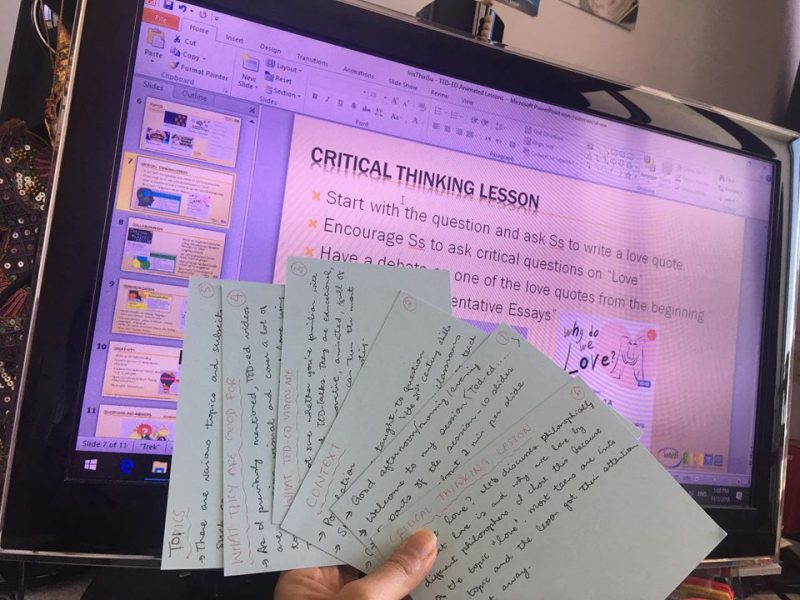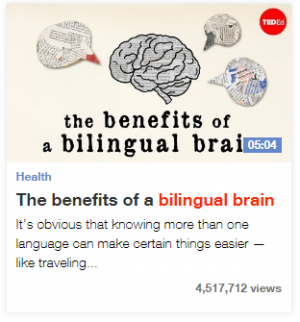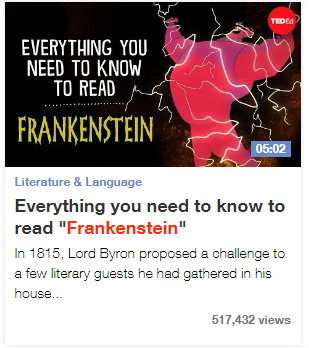Using animated TED-Ed videos in upper-secondary English language classrooms is engaging, interactive and enjoyable. As an English teacher in Myanmar, I have been using TED-Ed videos for almost five years. Upper secondary teenagers in Myanmar are rarely taught 21st century skills in mainstream schools and are also not taught to question, work together, listen critically or showcase their creativity. Therefore, my goal is to address this by sharing how I use TED-Ed videos to generate age-appropriate lessons and thereby facilitate the ‘4Cs’: Collaboration, Critical Thinking, Communication and Creativity.

What are TED-Ed videos?
TED-Ed videos are written by educators, animated by professionals and created specifically for educational purposes. They are interactive, innovative and full of audio-visual effects which can turn the most boring of topics into interesting ones. They are intended to spark curiosity and help to develop teenagers’ literacy skills. TED-Ed videos are original content which aim to celebrate the ideas of teachers and students around the world and they come with customisable lesson plans.
What topics are available?
There are a variety of educational subjects such as Teaching and Education, Literature and Language, Design Engineering and Technology, Health and Psychology.
What are the main benefits?
TED-Ed videos are gripping, visual and raise learners’ awareness of several global issues. The thing I love most about TED-Ed videos is that they cater to the individual groups of learners’ passions. For example, my upper secondary learners are often passionate about literature, environmental science and nutrition. Therefore, I could use the videos to start conversations about these issues. The videos are 4 – 6 minutes long, so are perfect to incorporate into either 90-minute lessons or 2-hour lessons. Furthermore, they are easy to scaffold for different linguistic levels.
The first C: Critical Thinking
As an example of a lesson I have used, I chose a video called “Why do we love?” It discusses philosophically what love is and includes the teachings of Plato and Buddha in an accessible manner. I chose this because the topic of “love” grabbed my teens’ attention immediately. I started with “Love is…” and invited my learners to complete the sentence in groups. Depending on their own love quotes, for example, “Love is blind”, they were then asked critical thinking questions such as “why do you compare love with blindness” or “why do you think being in love is the same thing as being blind?” They went on to ask similar questions in mini groups. I then formed two teams and asked the class to debate.
To watch “Why do we love?” click here:

The second C: Collaboration
As another example lesson, I chose a video called “The life cycle of a plastic bottle.” The use of plastic is a critical issue, but for teenagers in Myanmar environmental topics can be rather challenging to explore. By using a lighthearted video however, I was able to lead my teens into thought around these kinds of issues. They later wrote an implementation plan using the 3Rs (Reduce, Reuse & Recycle) for their neighbourhoods as well as listed difficulties and ways to address them in groups. They finally gave positive feedback to other groups with a suggestion.
To watch “What really happens to the plastic you throw away”, click here:
The third C: Communication
My third example lesson is based on a video called “The benefits of a bilingual brain”. As a bilingual myself, this video was personal for me and I was very keen to share it my students. Myanmar teenagers are trained to listen, but not effectively. I wanted to explore different types of communication and digital literacy. I asked my learners about the benefits of learning languages and as we have about 120 languages in Myanmar, they researched online about minority languages to later create an online discussion blog on the findings. They also asked to give a presentation about their findings in both English and Burmese.
To watch “The benefits of a bilingual brain”, click here:

The fourth C: Creativity
I believe creativity is all about practice, encouragement and having the resilience to embrace challenges. When it’s developed in class in a safe environment, students also benefit and thrive in their real lives. For creativity, I chose a video called “Everything you need to know to read Mary Shelley’s Frankenstein.” We wrote different endings, created our own Frankenstein monster, explored “Good” and “Evil” in people and society and most importantly, started conversations about being misunderstood and/or different in some way. This video and the accompanying activities really piqued their interest in English literature and cultivated their creativity.
To watch “Everything you need to know to read Mary Shelley’s Frankenstein”, click here:

Advice for Teachers
Here are my top tips for teachers who are interested in using TED-Ed videos in their lessons:
Q: How do you implement differentiated learning in the classroom?
A: I scaffold by having stronger students retell the stories (the content of the videos) to the weaker students, making two different worksheets (one easier than the other), letting stronger students take notes to reconstruct the stories later while the weaker students watch the video again with subtitles and I give definitions of key vocabulary to the weaker students.
Q: What are the main challenges when using TED-Ed videos?
A: Sometimes students aren’t very into the topic / video I have chosen. One tip for teachers is not to be too ambitious with the lessons, sometimes we have to accept that students are usefully exposed to a new idea, but may not yet feel ready to participate in a discussion about it.
Q: What kinds of resistance to discussing global issues do upper secondary learners’ parents / caregivers sometimes have?
A: Most parents / caregivers that I have encountered in my role as an English teacher want their teenagers to be outgoing and participate in public events such as debates. So far, I (thankfully) haven’t received any complaints from parents / caregivers about exposing my learners to 21st century skills.
Q: How can teachers find space and time in the syllabus to integrate TED-Ed videos?
A: Unless you make TED-Ed videos a core part of your learning aims, it will be highly challenging to fit them into regular English lessons. They should be regarded as a crucial supplementary resource when teaching this particular YL age range, I feel.
In summary
I hope my blog post inspires you to experiment with using TED-Ed videos in your upper secondary classrooms. You can access the videos on YouTube or from TED-Ed website. If you are interested in learning more about TED-Ed videos, please watch my talk recording from the IATEFL YLTSIG 2018 Web Conference here:
You can also contact me at https://www.linkedin.com/in/iris-thiri-su-248978153/

